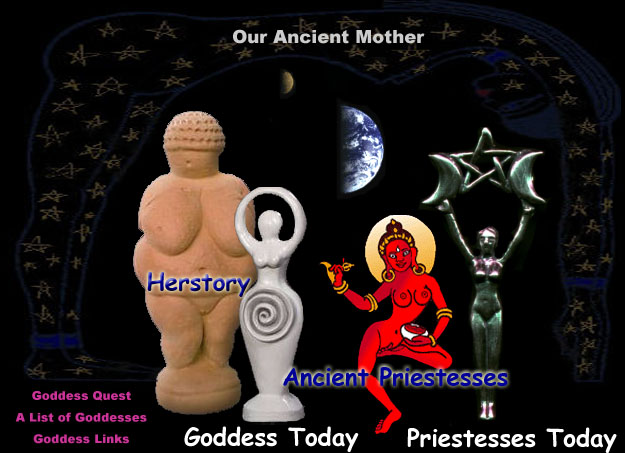The key symbol of Binah is the Yoni,
or female generative organ, indicating that this Sephira is the
energy from which all life emerges. It is the Great Womb, the
Supernal Mother to which all religions make reference in some way.
It is also the completion of the Supernal Triangle, which began as
the point in Kether, emanated to Chokmah as the line, and emerges
with Binah as the triangle.
Two questions generally arise when first considering "sexuality" as it is
philosophically described in these upper realms of the Tree of Life.
The first relates to the fact that the primary female Sephira,
Binah, stands at the head of the Pillar of Severity, while the
primary male Sephira, Chokmah, is at the head of the Pillar of
Mercy.
This fact reflects the Qabalistic definition of maleness and femaleness
as qualities, rather than as static characteristics, as well as the
ultimate bi sexuality of the soul. In the Supernal Triangle,
maleness is pure outgoing energy, merciful in that it is
unrestricted; femaleness is a limiting quality, and thus severe.
Moving down through the Tree of Life on the pillar of Severity we
find that Geburah destroys, while Hod again builds up (anabolism and
catabolism). And on the Pillar of Severity we find that Chesed
builds up while Netzach has destructive qualities.
The second question which inevitably arises throughout the Tree of life
is the extent to which there is an interchange of masculine and
feminine deities as we know them. although the key God figure
of Binah is Isis, the male Gods Saturn and Chronos are also
attributed to it. Moreover, at the base of the pillar of
Severity, beneath Binah, we find the male God Mercury in the Sephira
Hod. At the base of the pillar of Mercy we find the female
Goddess Venus in the Sephira Netzach. The answer is that our
concepts of gender are insufficient to describe the subtle
polarities and interchanges of energy in the Universe. Aspects
of a female deity often best describe aspects of a primarily
masculine Sephira. Moreover, it will be appreciated that the
Pantheons with which we are most familiar in the West are
anthropromorphic. We have created the Gods in our own image
with a certain fundamentalistic, though comforting naivete.
Binah is restriction. It is the will to form, a discipline
imposed on the pure force of Chokmah. At the same time it is
the Great Sea from which life emerges, a concept implying a
primordial Unconscious. Water had always been viewed by poets
and philosophers as harboring the deepest mysteries of our
existence. Indeed, in the Mundane Chakra, theories of
evolution propose that life, as we know it, may have emerged from
the sea.
The image of dark and deep waters is a very profound one which, as it
rises in our consciousness, cannot help but affect us in some
curious way. As the Golden Dawn Knowledge lecture states: "in
Binah is a thick darkness which yet veileth the Divine Glory in
which all colours are hidden, wherein is mystery and depth and
silence, and yet it is the habitation of the Supernal Light."
In this sense, Binah is described as the Outer Robe of
Concealment, an idea which might most readily be understood by
considering the extent to which our physical forms conceal our inner
realities from others.
In the sense that Binah is the giver of life, she is the Bright
Fertile Mother. But in the sense that she restricts and
disciplines (in effect, is the first lawgiver), she is called the
Dark Sterile Mother. This duality is also found in Yesod
(the Moon), which reflects the light of the Sun into Malkuth.
The moon is represented both by Diana and by Hecate. One is
the obverse of the other, bright and dark.
Throughout the Sephiroth and the Paths, the qualities of Binah and
Chokmah are given different names, depending on their degree of
density, i.e., their placement on the Tree of Life relative to its
completion in Malkuth. Thus we may speak of Isis in binah, or
on the Path of THE EMPRESS or THE HIGH PRIESTESS Or we may
discuss Venus, Diana, Hecate, or even Ceres in other Sephiroth,
knowing that these are aspects of the same Divine Energy. The
Jah of Chokmah and the Jehovah Elohim of Binah wear many robes
throughout the Universe.
One of the most important attributions of Binah is Chronos, oldest of the
Gods and called "Father Time." The concept of time is highly
restrictive, and appropriately related to Binah. Time measures
the process of aging, the migration from birth through life, toward
death, which is the ultimate result of the gift of life which passes
through Binah.
Binah, Understanding, is called the Sanctifying Intelligence, and
the "Parent of Faith." It may be taken to represent the structure
underlying established religion of any sect, without which a
"church" could not exist. Students of the history of art may
recall the iconographic theme where the Mother Mary is shown as a
large figure within a church, but where it is understood that Mary
is the church, in all of it organization, structure and sanctity.
But Binah is called the "Parent of Faith," rather than faith itself which
is belief. Binah is the discipline of organization behind
faith. Reason, science and intellectuality, all disciplines of
organization, are the fullest development of the Binah energy, found
in Hod at the base of the Pillar of Severity. Intuition,
feeling and artistic creativity are the ultimate product of the
energy of Chokmah, found in Netzach at the base of the pillar of
Mercy.
- Taken from Kabbalah - Charles Ponce
This page last updated: 03/01/2018
